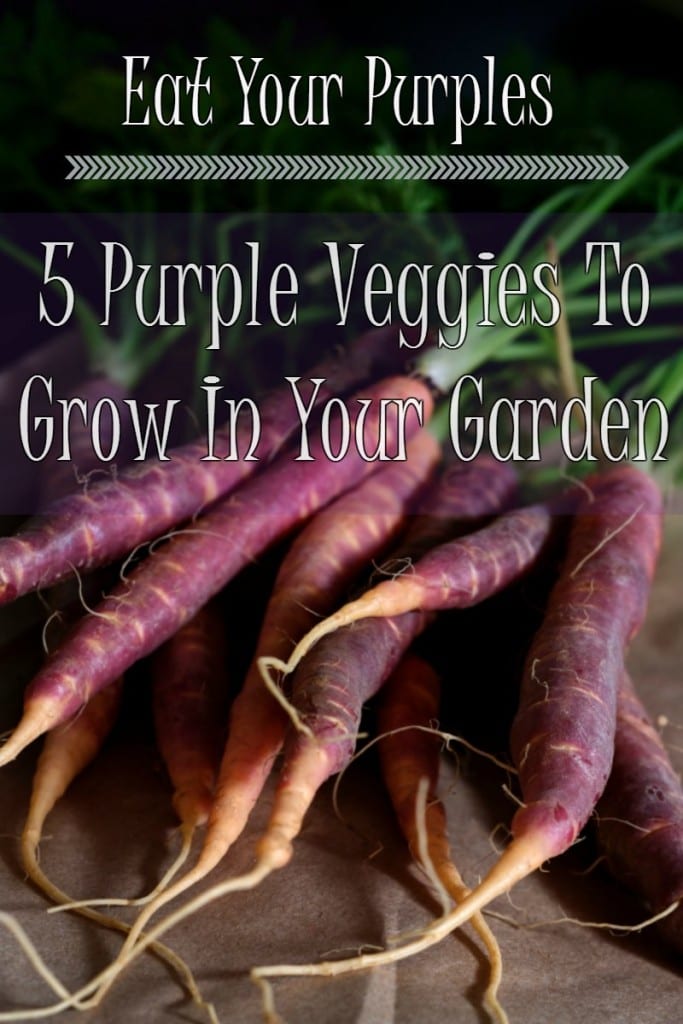Of all of the fond memories from your childhood, the stern voice of your mother or father admonishing you to “Eat your greens,” because “they’re good for you,” probably isn’t among them. Of course, we wouldn’t dream of insulting the traditional verdant veggies you grew up with. (Your parents were right. They are good for you.) But wouldn’t it have been more interesting if your ‘greens’ had been ‘purples’ instead?
Purple fruits and vegetables owe their brilliant coloration to a specific group of flavonoids known as anthocyanins. Found in countless fruits, leaves and flowers throughout the entire plant kingdom, anthocyanins – which can actually appear pink, purple or blue depending on the pH of a plant’s soil (sound familiar?) – have earned increasing popularity and high praise for their antioxidant, anti-inflammatory and anti-viral properties, as well as their positive impact on cardiovascular health, memory and concentration, digestion and urinary tract health.
The following five fruits and veggies are as delicious as they are beautiful. Add them to your garden and your diet to reap the benefits of ‘eating your purples!’
Purple Tomatoes:
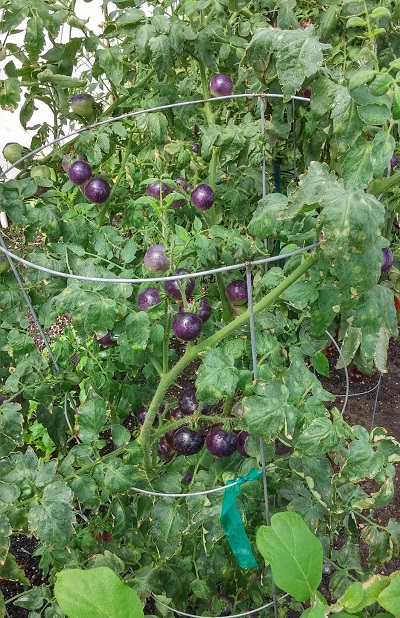
Many of us get lost in seed catalogs, forgetting all the labor as we look at glossy photos of perfect veggies. I was enthralled by photos of the Indigo Rose tomato, a brand new breed which first appeared on the market in 2012. Developed by Oregon State University, these tomatoes were specifically bred for their high anthocyanin levels. They are fantastic producers, and all around useful.
Pick up a pack of Indigo Rose seeds here and add these beauties to your garden this spring.
Growing:
These are a determinate variety, meaning a fixed height of about 5 feet. For example, I have a golden pear that is an inderterminate. It is reaching 16 foot vine lengths this summer, so a determinate is great for a tight garden. They are not too resistant to fungus compared to other breeds that I’ve grown, but they are more than prolific, as seen in the photo right.
Cooking:
The nice thing about tomatoes is that cooking is not required. If you are looking for a showy pasta salad, this tomato will not disappoint. With it’s obvious deep purple, it will have your guests delighted. These will also give you a fantastic salsa all by themselves. Add some, onions, garlic, peppers and cucumber for a fun summer dip. They are also a great sauce base, and we have enjoyed many-a-marinara here at home. Dice them and add to a crock for the day – just make sure to stir frequently.
Eggplant:
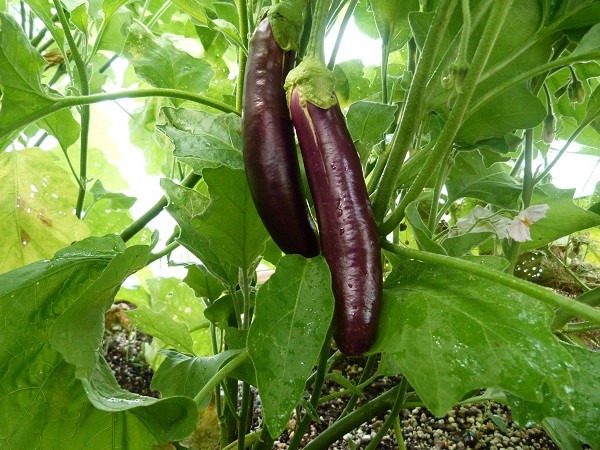
There are several varieties of eggplant to choose from. The most common will be the larger and darker type. At specialty grocers you may find the more perishable, smaller types which tend to be more purple than black, and are used widely in Southeast Asian cooking.
For the widest variety, or to have that perfect specimen, I would recommend growing your own. You can purchase heirloom eggplant seeds here.
Growing:
Growing eggplant is fairly simple. It is susceptible to the same issues as tomatoes and peppers. All three species are in the nightshade family along with the potato. Keep this in mind when rotating your garden. They will benefit from several applications of anti-fungals such as neem oil. The leaves are also a hot item with your local pests and neem seems to keep most of those at bay, on top of being an organic fungicide and miticide.
Cooking:
For you to get the most out of this veggie, keep the skin on and cook it until it just starts to turn color. If you cook anything too long, you will lose much of the health benefits as the molecules break down under heat. It goes well in any stir fry with garlic and thai basil as main additions. The tilapia and stir fry pictured right has chioggia beets, hansel eggplant and burgundy okra featured in this article.
Beets:
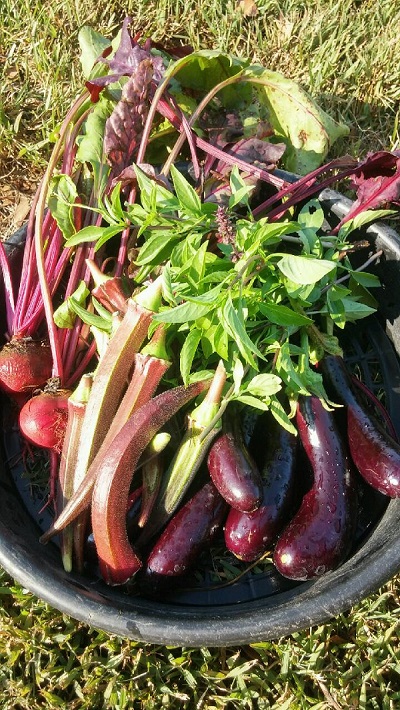
Beets are a fantastic additions to your diet or garden. The whole plant is edible, and the taproot will have your dog wagging their tail for more. For my family, the beet leaf is a prized addition to the garden salad. It can change the whole character of a delicate dressing. The stems of the leaf add a nice crunch when diced, and are just as purple and juicy as the more commonly eaten root. This plant also brought us what is called swiss chard, a refined and broader leafed beet with little or no root ball. Both come in reds and yellows, oranges and stripes.
My favorite is the chioggia, when sliced down the middle it looks like a bullseye and is the most delicious when raw. You can purchase a packet of organic chioggia beet seeds here.
Growing:
The beet is a cool season crop and can be grown in spring or fall. I enjoy them best in fall and place frost blankets over the top on a hoop as winter comes on. The leaves a fairly hardy and both the leaves and root benefit from cold weather. In many vegetables, cold weather brings on a reaction that creates more sugar in the plant to help it cope with the cold – so a beet in midsummer is like a crab-apple compared to a honeycrisp apple.
Cooking:
Look for varieties that are less for shelf life and more about flavor. Large purple ubiquitous beets are not doing their older cousins justice. Many of the heirloom types are a more rustic food that are delicious when sliced next to cheese and bread. You might try them in a spicy dish to bring out their sweetness and add depth. If you are a juicer, this will definitely be a fun addition. If you are going for really rustic, add some olive oil to a pan and simmer the beets for ten minutes. Add 1tsp of brown sugar for one more minute, turn off the heat, and sprinkle with ginger or cinnamon. If you are a meat eater, toss that on a steak.
Okra:
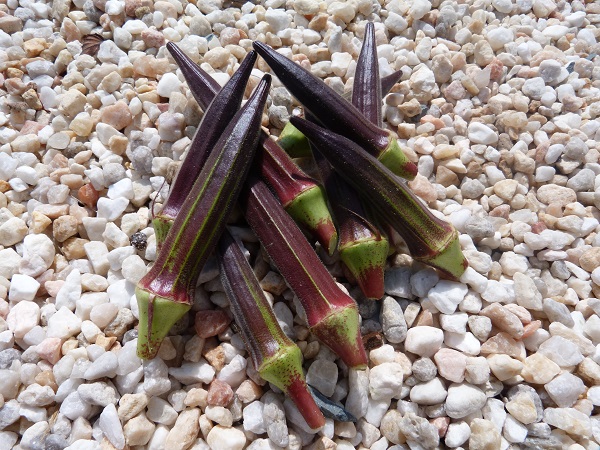
Okra is usually green, so it may be a surprise to know there are also purple varieties. If you have never seen okra growing, it’s a beautiful plant with flowers 3 to 5 inches in diameter on stalks up to seven feet high.
Try it out for yourself. You can pick up a packet of red burgundy okra seeds here.
Growing:
This plant reaches up to ten feet in height, making it obtrusive in many gardens. Soil should be kept moist during germination and the first 3 weeks of growth. Additions of calcium are important as this is crop has a thick-walled structure. It requires a very warm soil and climate, putting it on the short list for many. There are also some spiny varieties that will cause hives. But it’s all worth it to have this vegetable in your arsenal.
Cooking:
It is famous for making a gumbo what it is. It is fantastic roasted whole with oil and salt, and equally at home in a casserole, stir fry, and many other soups.For roasting, simply spray with olive oil and sprinkle salt and pepper – 400 degrees for 8-10 minutes. For soups, slice into 1/2 inch rounds and add towards the beginning. Okra will thicken any soup and add a hearty vegetable flavor. For stir fry, add at the beginning or as the earliest vegetable, it takes a bit of heat to soften these up. They are a featured addition to the stir fry and tilapia dish above.
Purple Carrots:
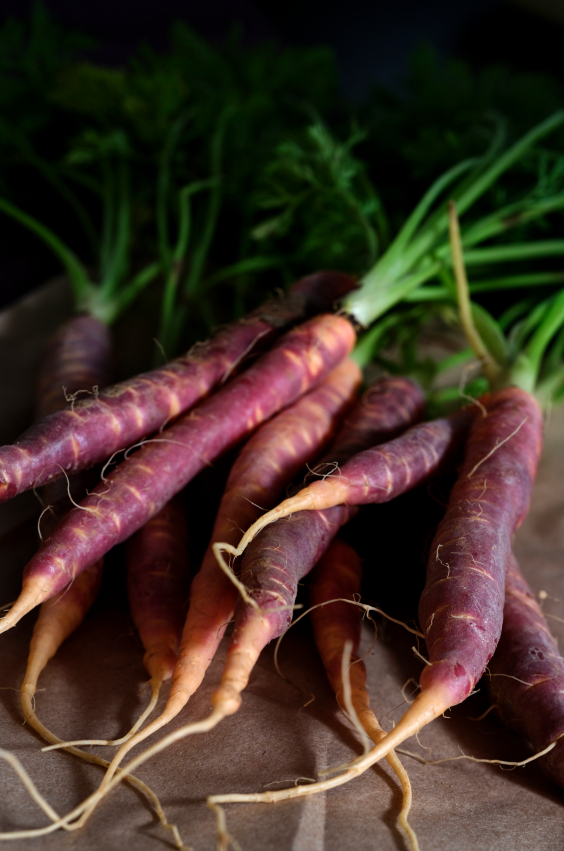
Most people do not know that the first carrots were purple until Dutch gardeners bred the orange varieties. Purple carrots are a little deeper and more complex in flavor. They are certainly healthy for you as well. They contain one of the highest levels of antioxidants out of the many vegetables available to the average eater.
As many readers can attest, a perfect carrot is hard to grow but delicious to eat. If you’re feeling up to the challenge, you can pick up a packet of purple carrot seeds here.
Growing:
There are two tricks to good carrots – No rocks, and shallow germination. The second part is probably the most overlooked, and in many climates the soil dries out quickly at the shallow level that carrot seeds require. The best solution is to place a floating row cover over the bed after planting, and water daily until sprouts become lacy. Also, think loose and sandy. Don’t overlook bringing in sand for a nice carrot patch or two, as many other plants can use that finer loam when the carrots are pulled out.
Cooking:
I like to classify carrots into two categories: woody and tender. The tender carrots are used raw or slightly cooked. One of the best ways to enjoy carrots is by roasting them in the oven at 450 for 20-30 minutes in butter or oil and tarragon. A great way to preserve woody carrots is to make Escabeche, a spicy Mexican pickled carrot made with onions and jalapenos. (note: you can also find purple green beans and pickle them with the purple carrots, they are delicious and awesome to look at.)
If you are looking for some gorgeous variety in a healthy diet, give some of these a try.
Recommended Reading
Both okra and carrots made it onto the list of our favorite ordinary foods with extraordinary health benefits. Read more about them in our recent article: 10 Ordinary Foods With The Most Extraordinary Health Abilities!

